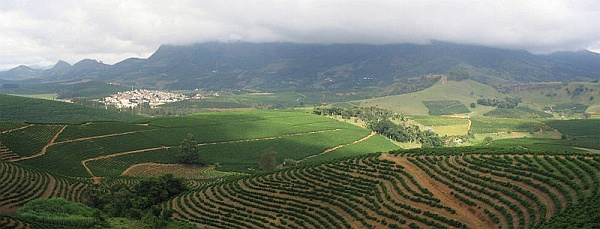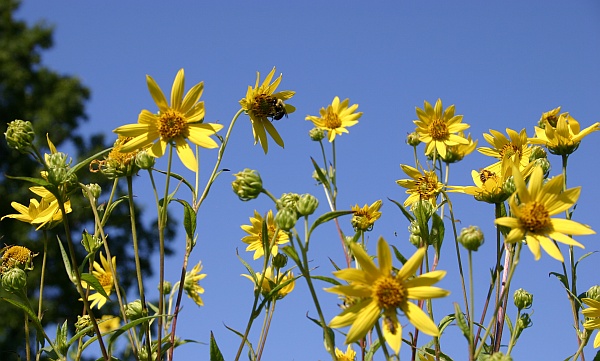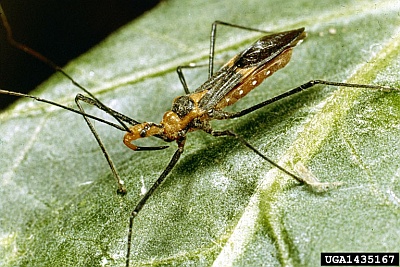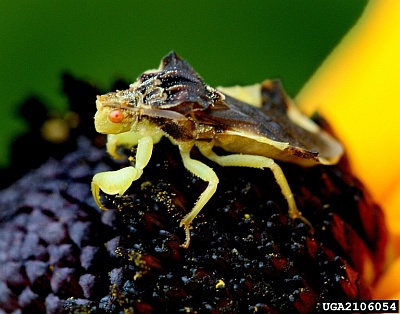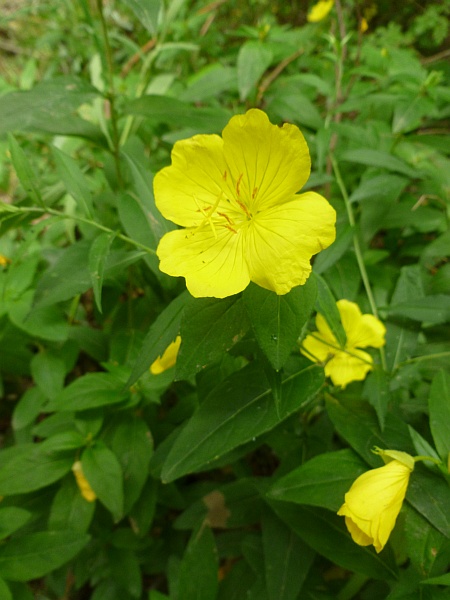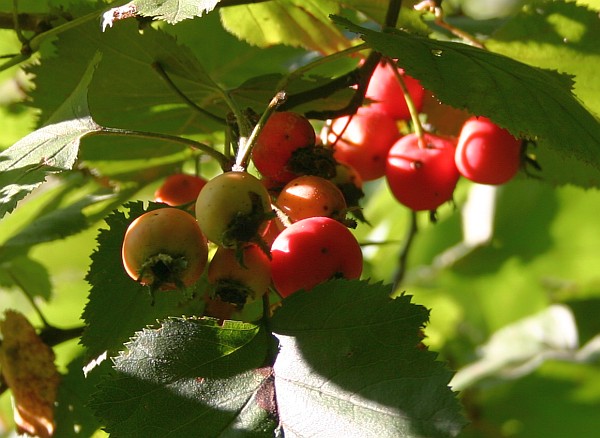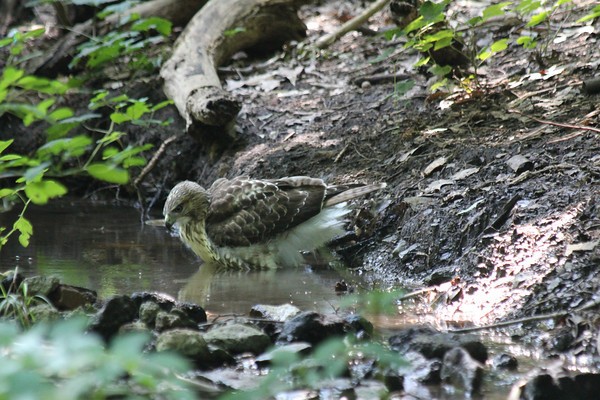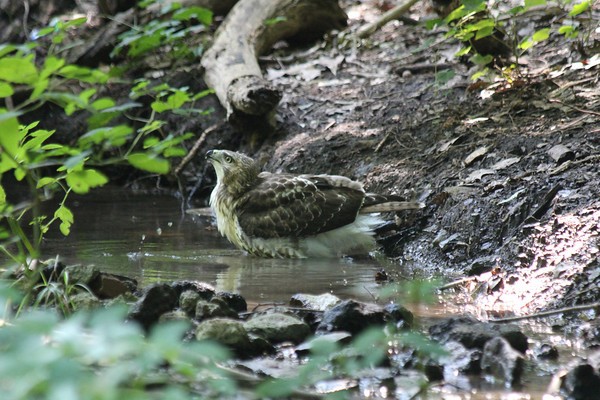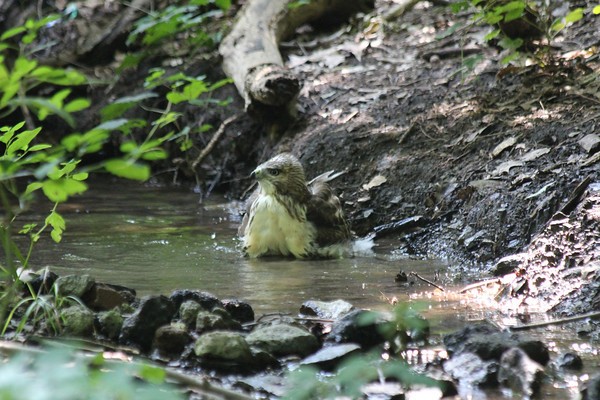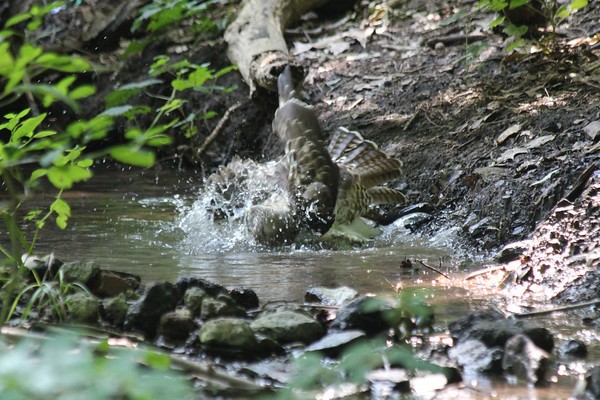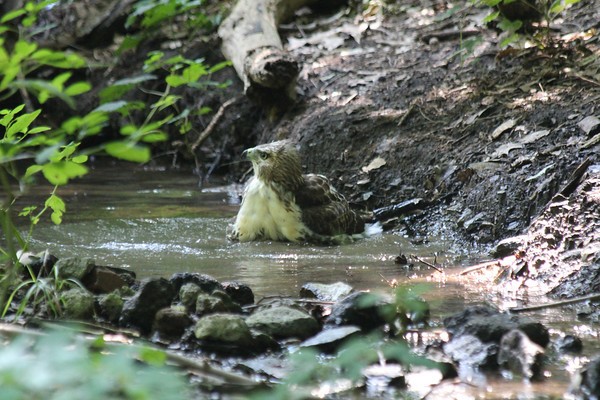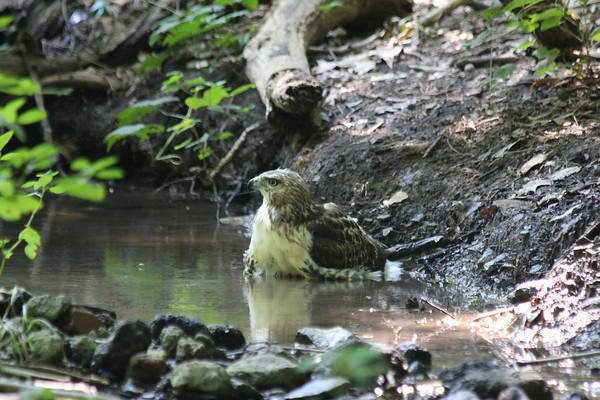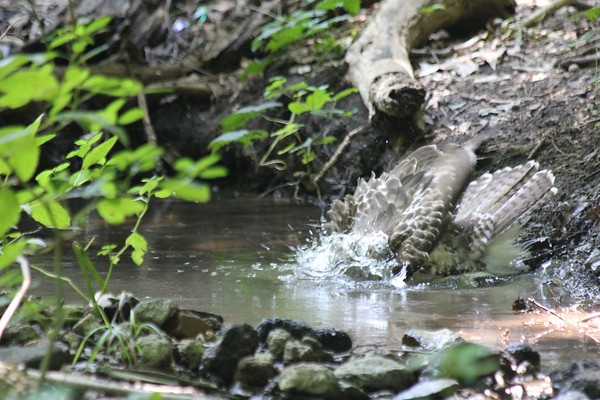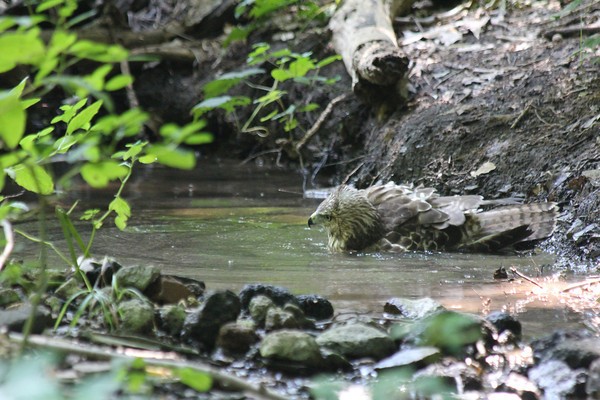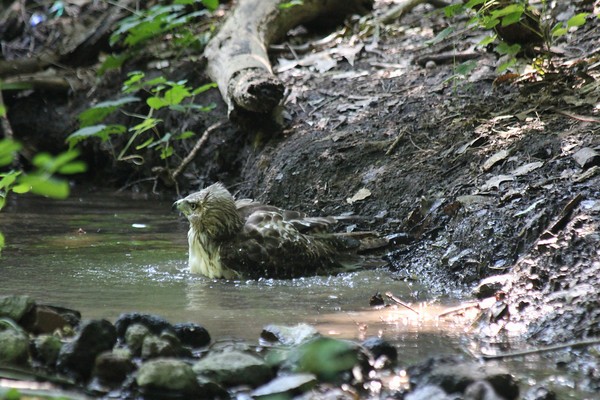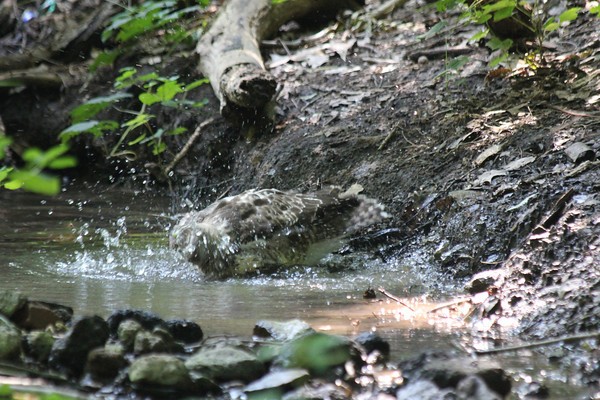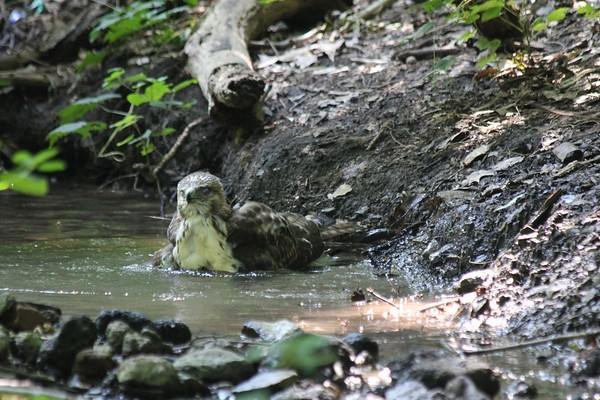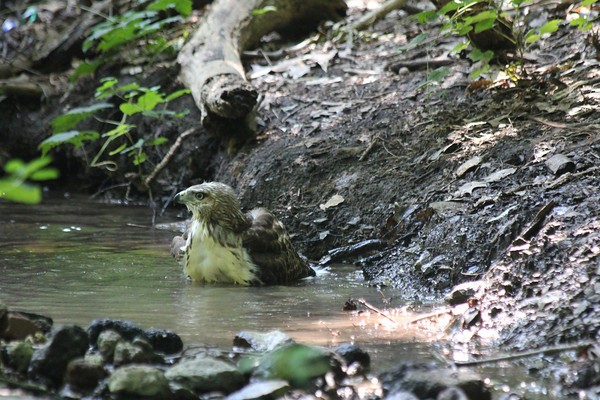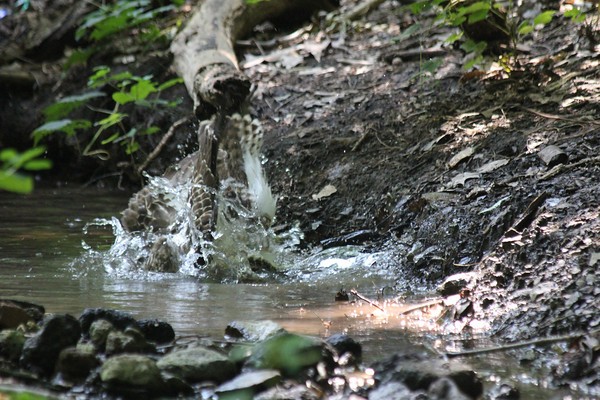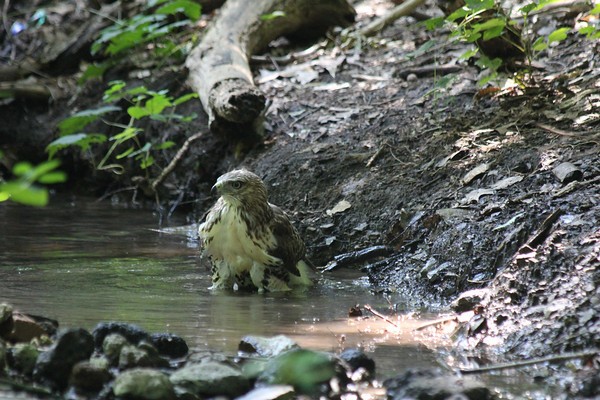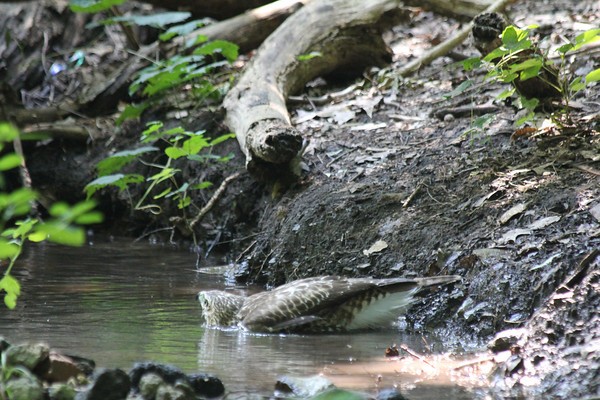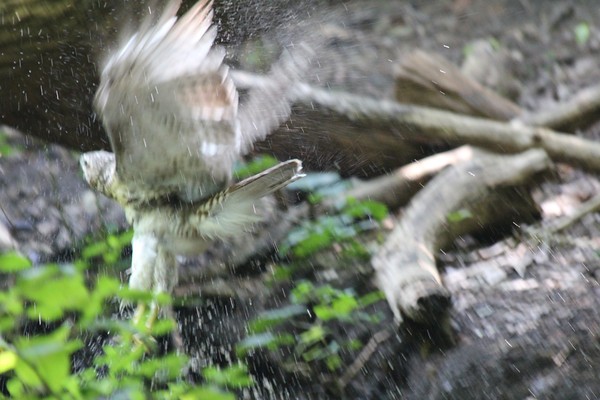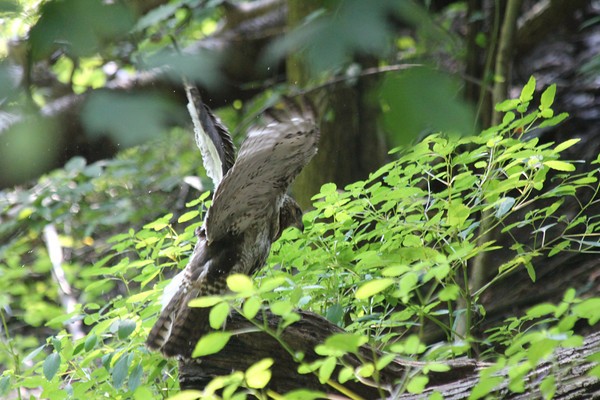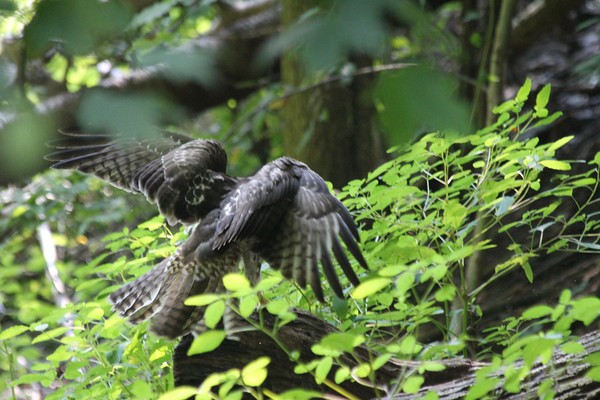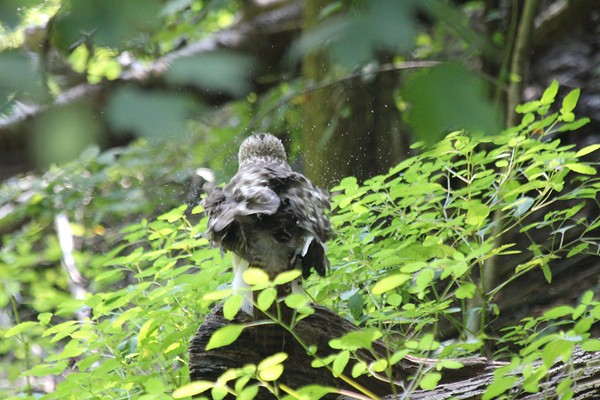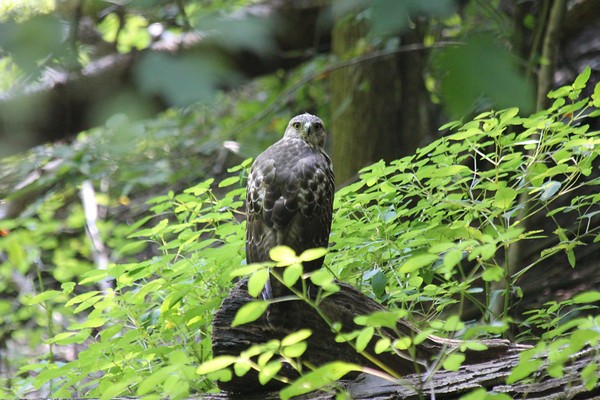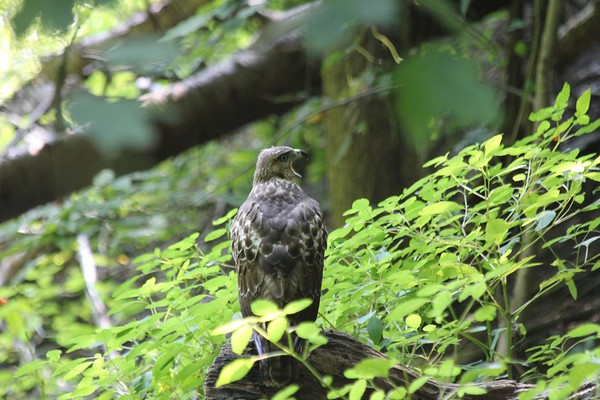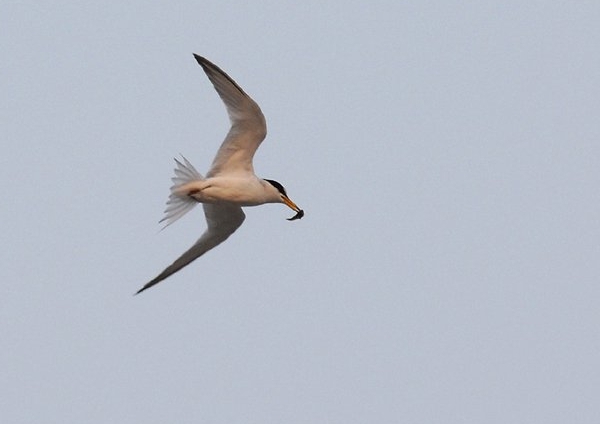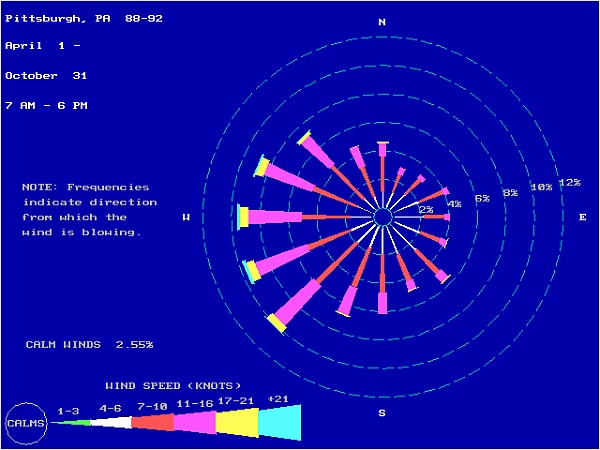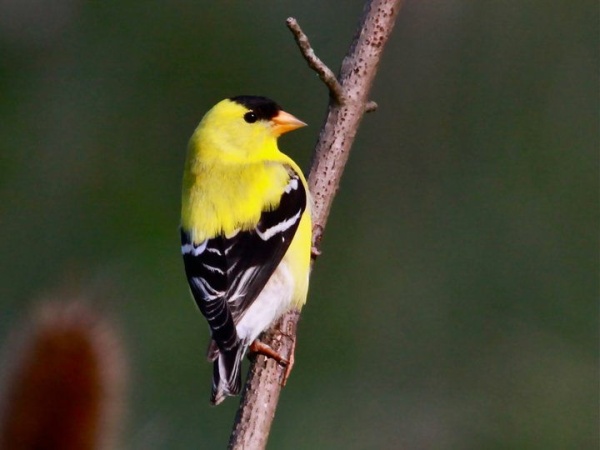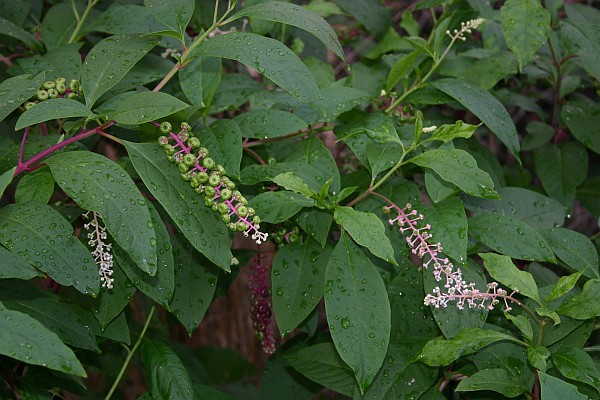
16 August 2012
August is prime time for observing pokeweed (Phytolacca americana), a tall perennial that’s easy to find in waste places and along roadsides. Though its name is “weed,” I love its colors.
In winter pokeweed dies back to the taproot but by August it’s 6-10 feet tall with spreading branches. The succulent stems are stout and reddish with deep green alternate leaves up to 16″ long. This plant is big.
Pokeweed’s flowers bloom on racemes that curl up while flowering and droop down when heavy with fruit. This month you can see the flowers and fruits in all stages of development, often on the same raceme.
Here the flowers show five white petal-like sepals and nascent green berries in their centers. Notice how the stem is pink. Pink, white, green.
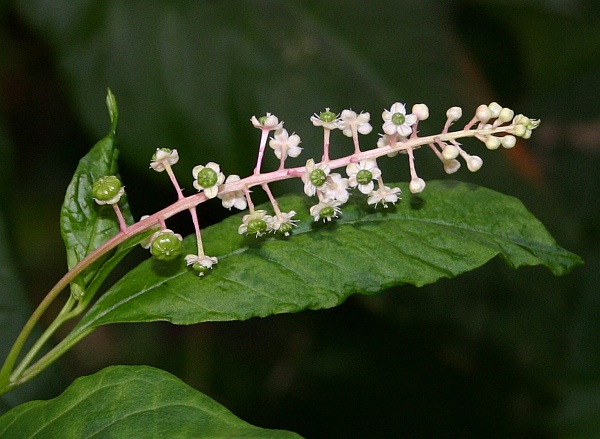
After the flowers are pollinated the green berries grow larger. On this stem the berries are all the same age, but that’s pretty rare.

More often the berries range from unripe green to ripe blue-black on the same stem. This raceme shows nearly every stage in the berry life cycle.

Ripe pokeberries are a favorite food for catbirds and cardinals, robins and mockingbirds, thrashers and waxwings. When the berries are gone the empty stem puts on a final show in gorgeous magenta.
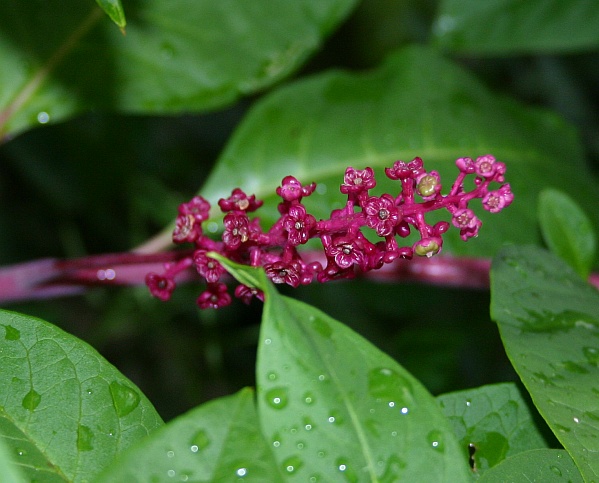
Like many plants pokeweed is toxic though if properly prepared the young shoots can be eaten in Spring. The song about eating pokeweed, Poke Salad Annie by Tony Joe White, might lead you to believe lots of people eat it.
Don’t attempt to eat pokeweed until you know how to prepare by it! Everything you need to know is in this video from Edible Mountain on West Virginia Public Broadcasting:
On the plus side, the deep purple berry juice makes a beautiful red dye.
Pokeweed’s colors are a delight at every stage.
(photos by Kate St. John)

